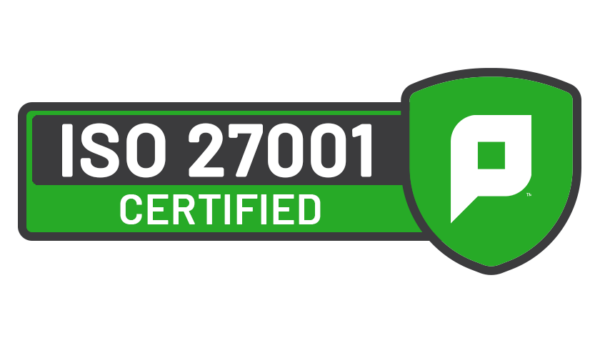The healthcare market still offers a wealth of opportunities for document imaging dealers.
Here’s a fun fact: About 70% of medical communications are faxed. Printed using toner or inkjet instead of old-school thermal printing, faxing remains a critical communication medium in doctors’ offices, hospitals, medical labs, clinics, and pharmacies. Emails can be hacked, lost in the shuffle, or wind up in a spam folder, but faxes invariably land in the output tray at the desired location, seconds after being sent. The result is a voracious appetite for fax machines throughout the medical industry, both as dedicated devices and MFPs.
This 70% amounts to about 17 billion fax pages annually, according to Ross Wood, healthcare channel sales manager at ecoprintQ, a software solutions and services provider. That 11-figure total is part of a vertical market every dealer should be calling on. Wood, an expert on this topic, holds regular ecoPrintq webinars on the healthcare channel and other topics, many geared to the needs of copier/printer dealers. They are usually free and worth the time.
As Wood tells it, there’s a lot more than faxing going on, making the entire medical market a lucrative one for document imaging dealers. In many medical facilities, MFPs and fax machines are almost as common as desks and all the devices you sell are needed in small local clinics through large hospitals alike.
Entry points to this market vary, but skip the speeds-and-feeds conversations. No one cares. The key talking point is how devices and software are going to make the world a better place for doctors, nurses, pharmacists, and other medical practitioners. “The low-hanging fruit are [facilities] with 50 to 250 copiers and printers,” said Wood. “Many health care providers got COVID dollars, so they have money to spend and are wide open for print management solutions.”
Many small clinics—often ancillary operations of hospitals—fall into this category, and your sales team should be calling on them. But they must be ready before they walk in the door.
HIPAA Conversant
Whichever organizations your sales team targets, one of the first things they will encounter is HIPAA (Healthcare Insurance Portability and Accountability Act) regulations. This is the first litmus test for whether (or not) you can play in the healthcare field. To succeed in this space, you must be at least moderately conversant with HIPAA rules and show how your products are compliant with these rules.
For more info on HIPAA, just Google it, and you’ll find more links than you want to follow but be sure you understand how it applies to the devices you seek to place in medical facilities. Your OEMs can help too because they know a lot about this issue.
The key point is this: your sales or tech team cannot just plug in a device and walk away. The new device must be equipped with or connected to software that meets HIPAA requirements. This can be software already on the machines or print management tools such as PaperCut. It must be HIPAA compliant if you are to provide secure and easy-to-implement solutions for prospective customers. A plus for your business is that HIPAA-level security built into print management software can be an advantage for customers who don’t presently realize the importance of security on all their small devices. This can make your team the hero by providing medical-grade security to a wide range of customers.
Beyond Faxes
To get a vendor’s take on the matter, I called Navin Balakrishnaraj, national practice director for health care IT services at All Covered, Konica-Minolta’s IT and document management division. He said one big change in the medical market was a shift from outside print-service providers to producing more documents—especially marketing materials—internally.
Balakrishnaraj referred to them as marketing materials, including informational brochures about a host of medical conditions and treatments and direct mail. For example, a back specialist might produce documents about specific conditions to better inform patients about conditions they may experience and make the documents available in print and electronic formats.
Using small office-based machines—the kind you sell and support—a doctor’s office can readily produce the materials as needed from a PDF that is stored on a computer, printing the documents as needed rather than in bulk from a local print provider. Now, imagine the same kind of information being put on a poster-sized print that could be provided to multiple locations in a health care group. You’ve probably noticed how some smaller local medical practices have been subsumed or absorbed by larger clinics or hospitals. They still need faxes and MFPs and even larger devices, all of which you sell and support. Talk with them.
“Dealers have to show healthcare providers the value these devices can provide,” said Balakrishnaraj. “Some dealers may even have ways of offering creative services that can help healthcare providers get the most out of the devices they acquire.” Such ‘showing’ is essential in today’s service-oriented economy because it helps differentiate your business from the shop in the next ZIP code that may still be selling speeds and feeds. By showing real value and expertise, the business is more likely to come to you.
Time to Go Vertical
Now think bigger. Firms in consulting, banking, education, engineering, financial services, legal, and more all seek effective solutions. While some types of companies are printing far less than they once did, others are finding that small printers, copiers, and MFPs can work well for lower volumes. Still, customers are candidates for faster, standalone machines. In either case, they may not know it yet!
Nearly every vertical market has its own unique needs that require printing. While the landscape has been altered by the pandemic, one thing that is clear is that while the need for printed matter has changed with respect to where it is done, many pages still need to be printed. Find out what prospects need and how you can deliver for them.
Beyond a Locked Door
There’s still more to vertical markets. For instance, many vertical-market executives are especially interested in security. A highly regulated aspect of the healthcare field (HIPAA, again), security extends directly into other verticals. “Too many places think a locked door is security,” said ecoprintQ’s Wood. This mindset ignores the fact that electronic intrusions arriving over the internet may emanate from a distant time zone. “Dealers who can provide the devices and security customers need, while also making devices easy to use, have an advantage over other dealers,” added Wood.
To stoke this conversation, you must get past the usual bean-counting procurement manager and reach the chief information officer. They have a vital interest in security, so you will need to show what you bring to the game. Bear in mind, that if you have a scalable solution, it may be one a healthcare provider or other vertical will want to adopt across a company—or even an enterprise. Bring your A-game.
Some big vertical markets are ones you may already play in. If your business already has connections in some verticals it is time to further pursue these markets if you haven’t already. Ask questions about how their business and its customers’ needs have changed over the past two years, especially with respect to printed communications. Talk with your OEMs to see what they recommend. Show prospects what the machines you offer can do and talk about the value of having such devices readily available. And just don’t focus on hardware, software should also be part of the discussion, especially since it’s not a product impacted by supply chain issues or chip shortages. Not everyone will be a fit, but never leave money on the table when it comes to delivering value for your customers and the vertical markets they serve.
Access Related Content




